For many years this small bichir from the Congo did not come to us. Now we finally succeeded in importing them again. Polypterus polli remains under 30 cm total length and thus belongs to the smallest species of these ancient fishes. It can easily be confused with P. palmas from Guinea and with P. retropinnis, which also originates from the Congo. The easiest way to distinguish the two species from the Congo is to look closely at the pectoral fins. In P. polli, these are lemon yellow, without banding, and have a bold dark spot at the base of the fin. In P. retropinnis, these fins are more gray, delicately banded, and lack the dark spot at the base of the fin. In addition, P. retopinnis is much more slender than P. polli.
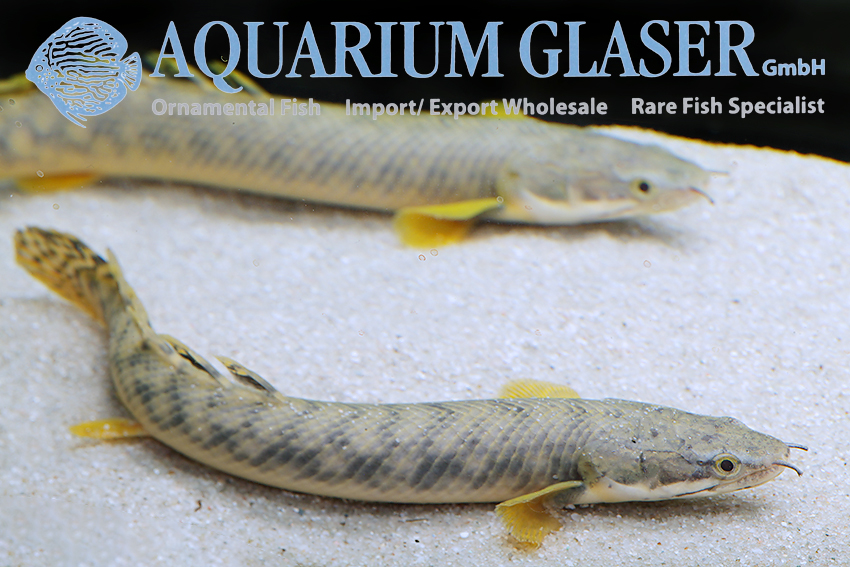
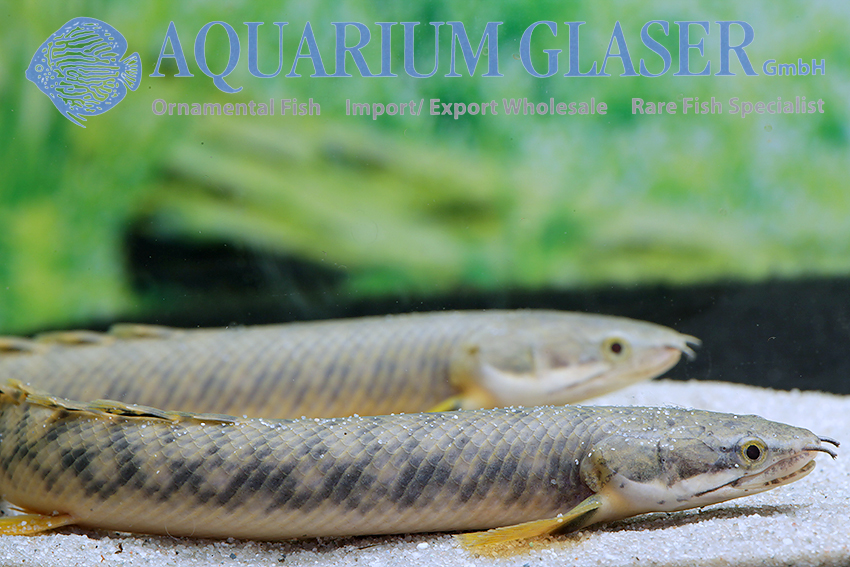
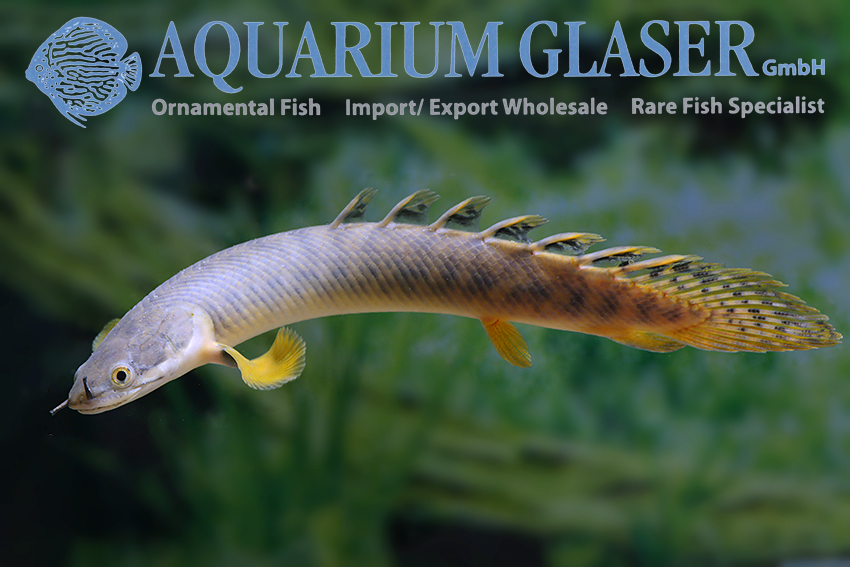
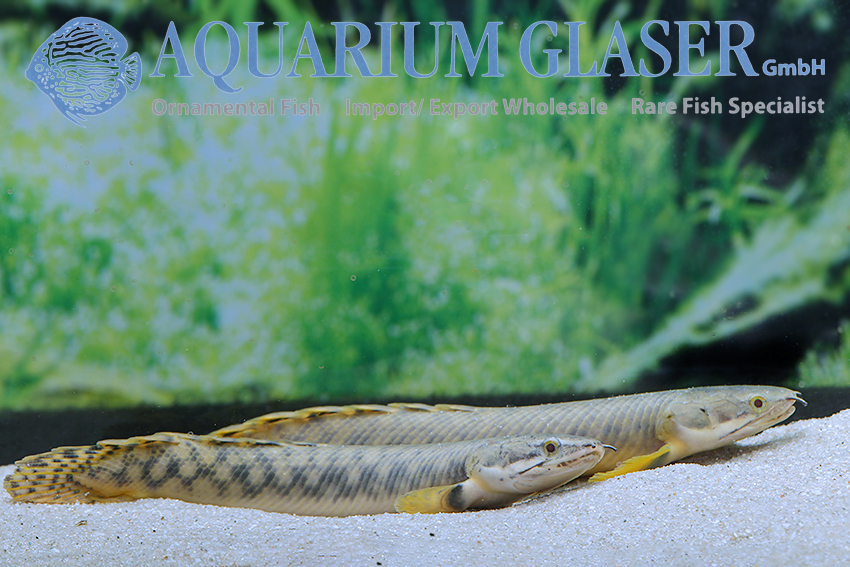
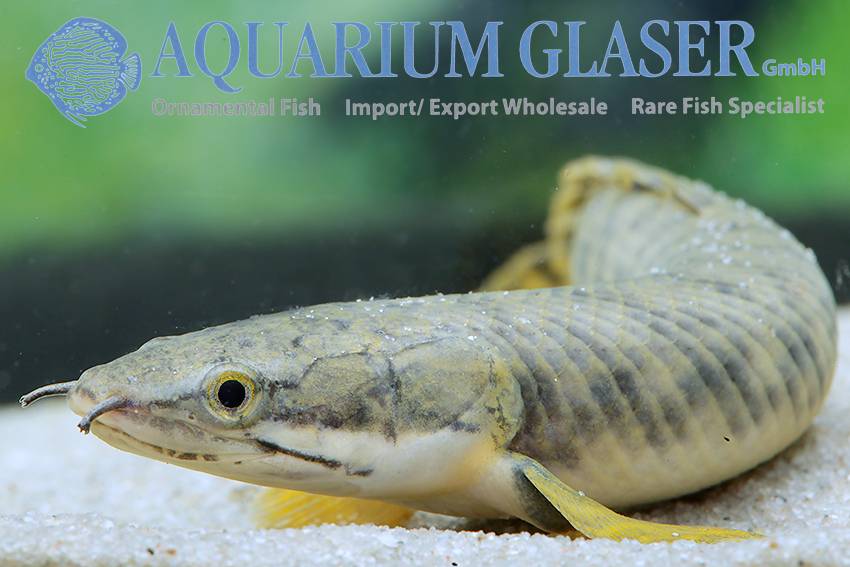
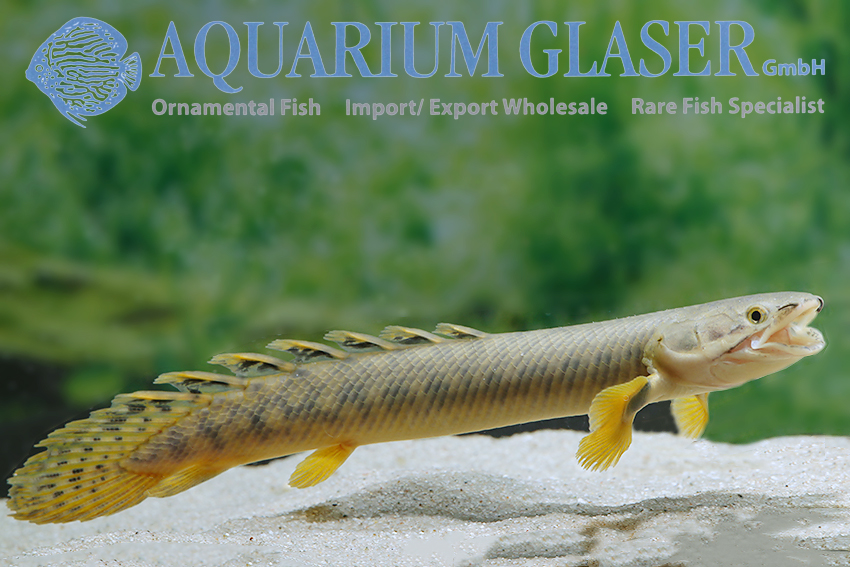
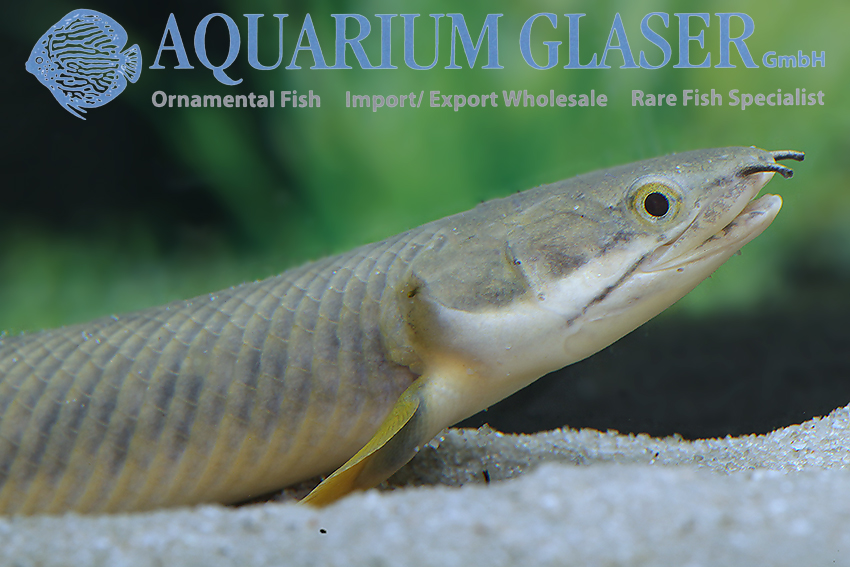
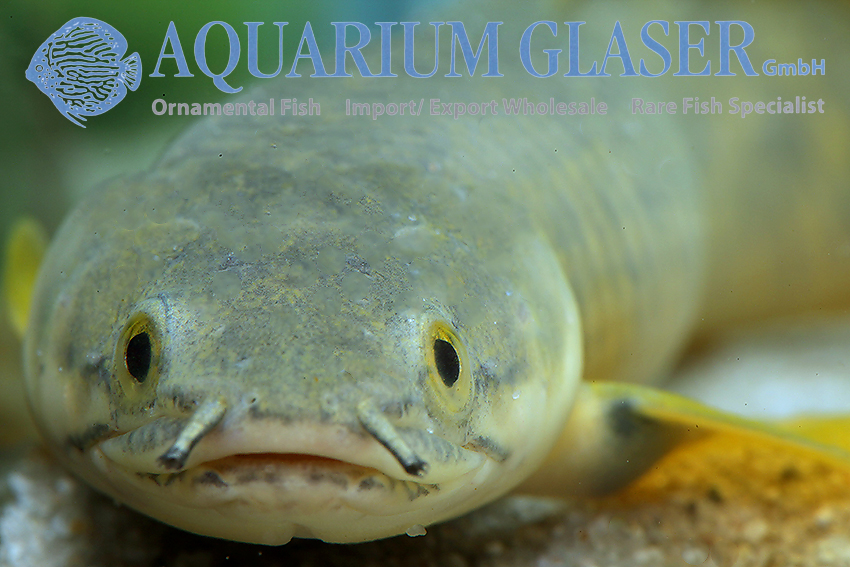
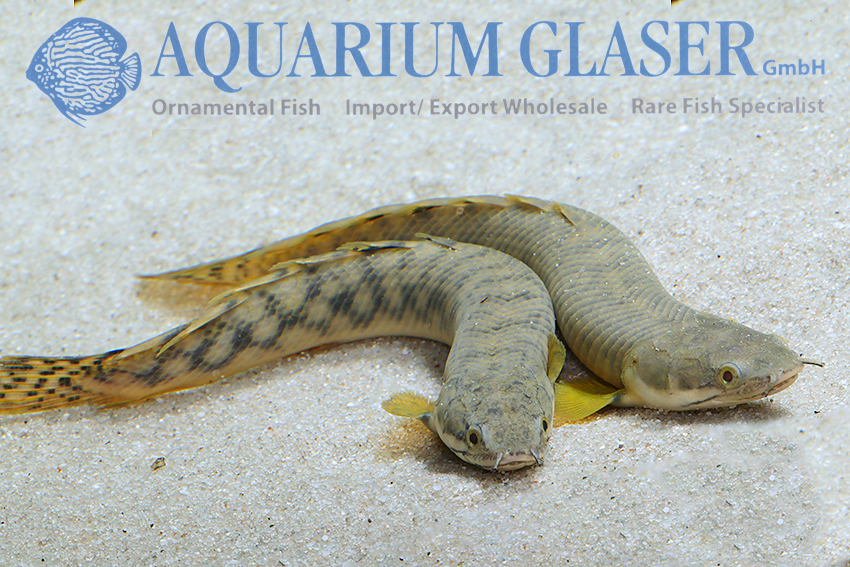
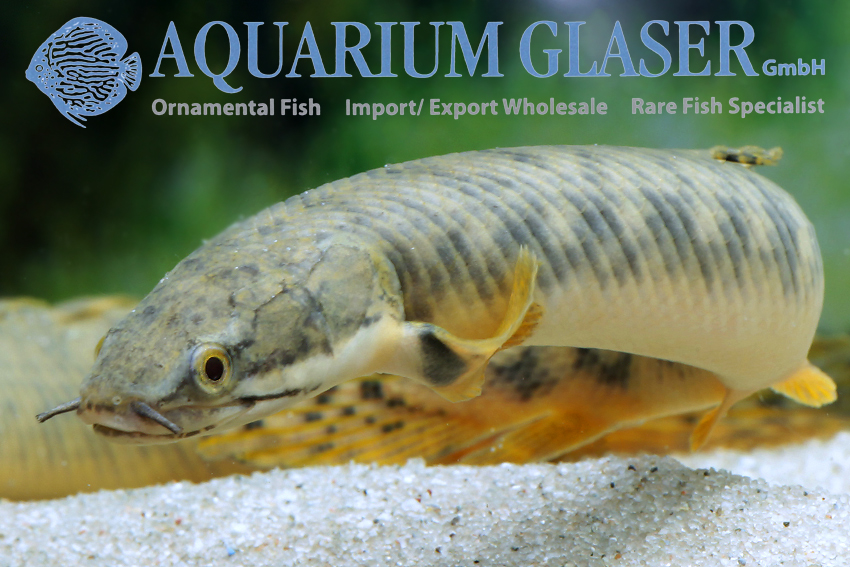
On the other hand, it is more difficult to distinguish between P. polli and P. palmas in small Polypterus of unknown origin. These species are so similar to each other that they formerly used to be listed only as subspecies to each other. However, they do not occur together anywhere. P. palmas lacks the black spot at the base of the pectoral fins (but a dark spot may be present, just not as strong and distinct as in P. polli), the pectoral fins are usually distinctly spotted, as is the top of the head.
Polypterus polli is a peaceful fish, but considers small fish as food. Keeping this in mind, P. polli is very good to keep in community aquariums with other Congo fish. No Polypterus is engaged in brood care. The animals spawn freely in the water. Sexually mature males and females differ clearly in the shape of the anal fin, which is greatly enlarged in the male.
For our customers: the fish have code 164702 on our stock list. Please note that we only supply wholesale.
Text & photos: Frank Schäfer




